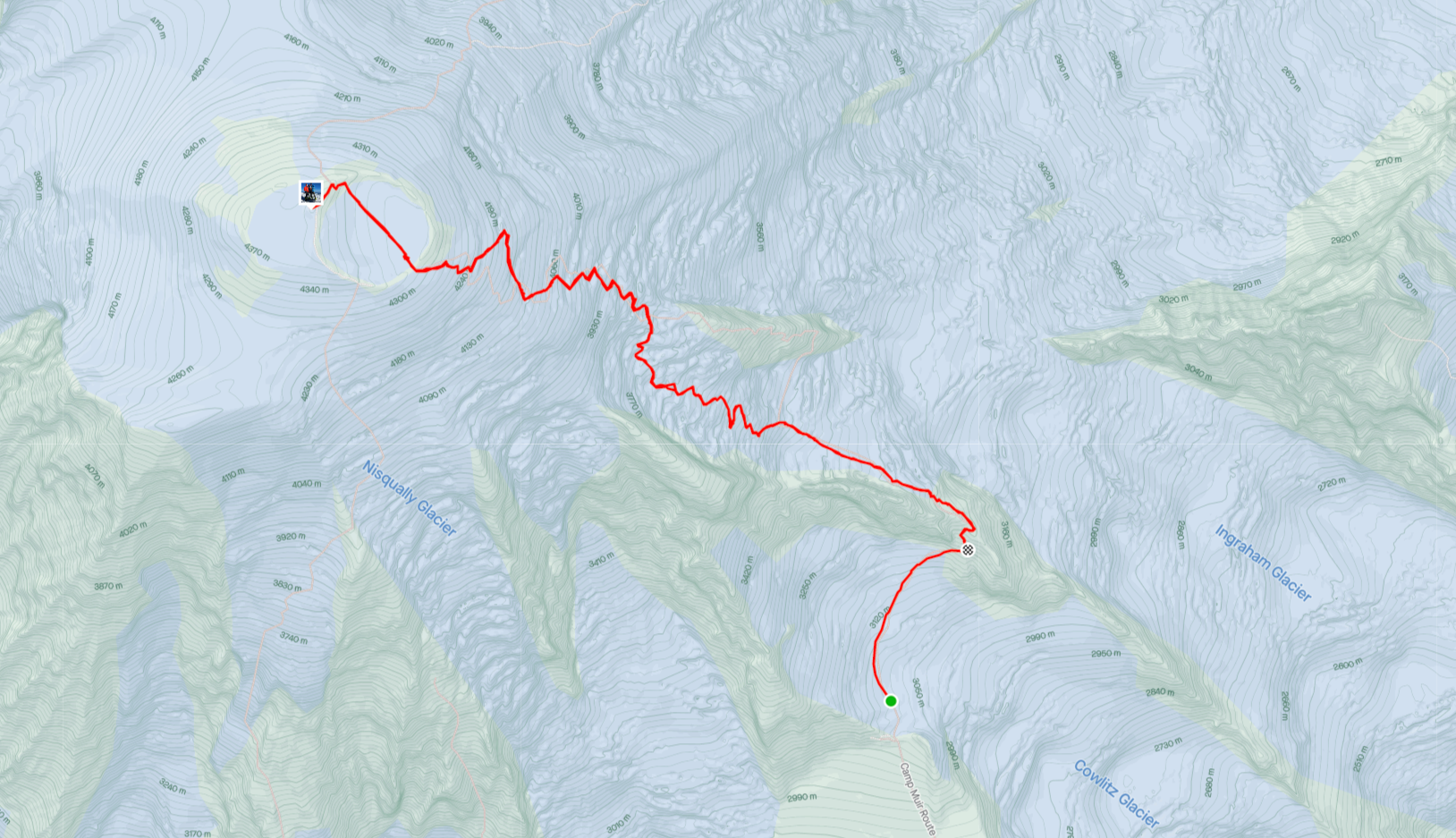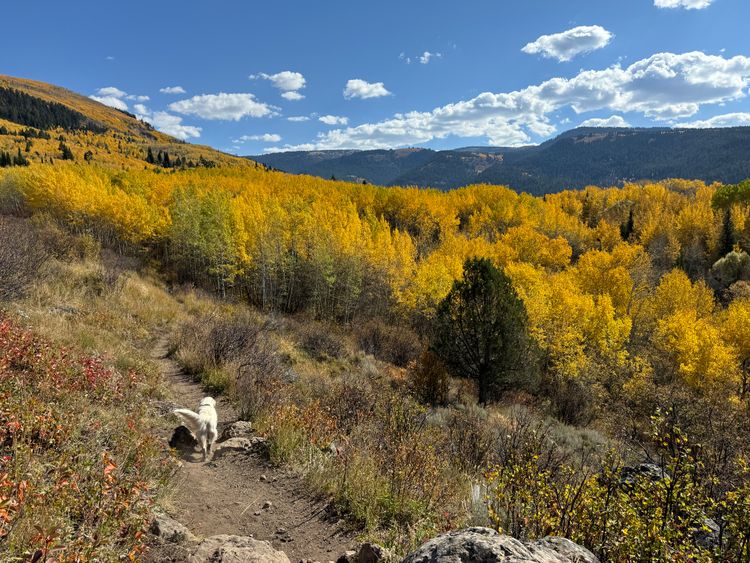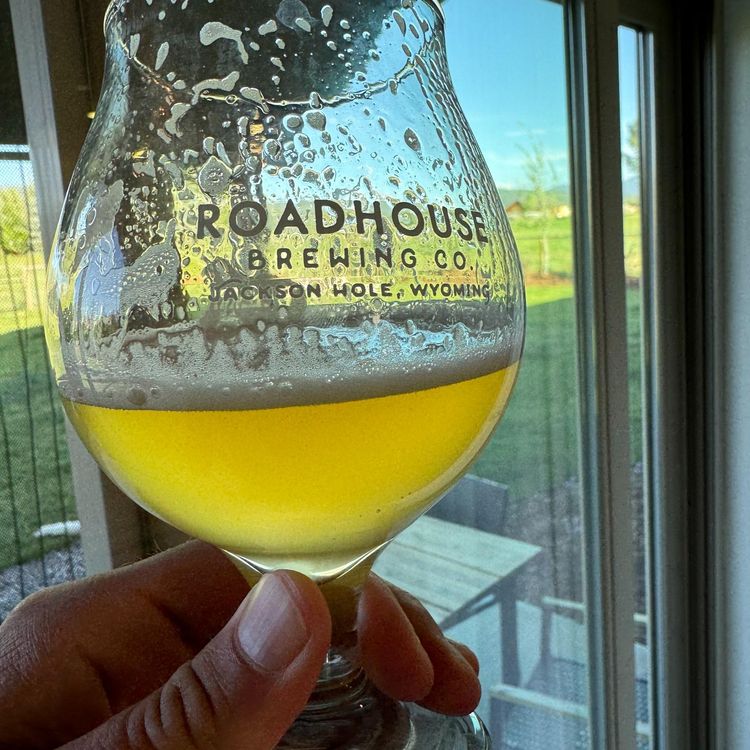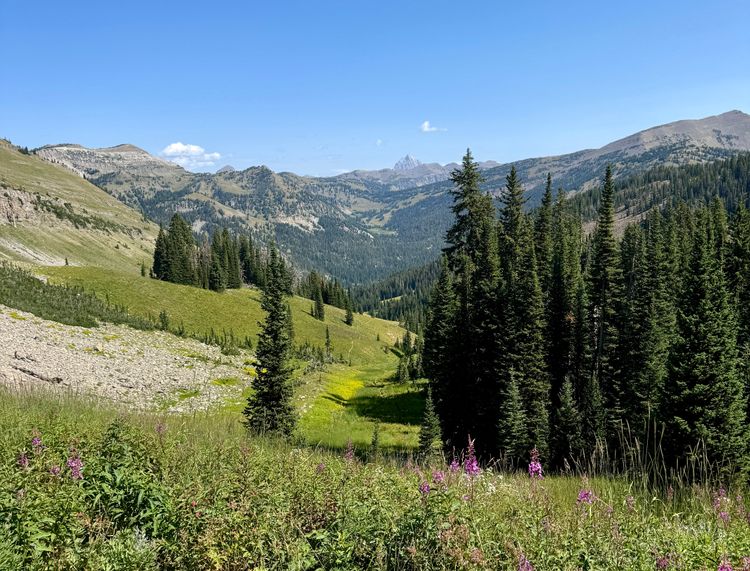Climbing Mt. Rainier
Video
Podcast version on Spotify here
I set out from Bend, Oregon, this past Wednesday morning and began the five hour commute up to Ashford, Washington. The whole time I was driving, I fretted about the weather. Rainier, like most big peaks, is known for unpredictable and rapid changes in its atmospheric attitude. Looking back on my experience, I feel like I cheated a little: We summited with cloudless skies and mellow winds. For many climbers, the weather is an obstacle to surmount not unlike the glaciers and vert that make Rainier the challenge that it is.
When I pulled into Ashford I was thinking about all of the climbing legends who’ve been through this place: Ed Viesturs, Mark Twight, Jim, Lou, and Pete Whittaker, among many more. Rainier is a test piece. It’s the place where countless climbing careers begin, and some tragically end. As Twight says “the mountains have teeth.” One of the worst accidents in US mountaineering history happened right here in 1981, where 11 people were killed when the Ingraham Icefall fractured and avalanched down the glacier. It was the very same route we’d be attempting.
My friends and I went with the four-day climb through RMI (Rainier Mountaineering Inc.), which dates back to 1969 and was one of the first guide services operating in the vicinity. Two of the four days of the climb itinerary are dedicated to prep and the other two are for the climb itself.
After checking in at RMI’s basecamp, we met two of our guides: Ray and Brent, and we’d later be joined by Nicole. Brent Okita is the humble world record holder for the most summits of Rainier—before our climb, 579. They walked us through an extensive briefing on the route and what to expect high on the mountain. Brent assessed the conditions were right for an attempt at the Ingraham Direct route, which shaves off an hour or more each direction relative to Disappointment Cleaver, the most common way of accessing the summit. The ID, as it’s called, is highly dependent on the condition of glacier and finding a passable way through the crevasses. In mellower winters, when the snows don’t fill in enough, the guides don’t even attempt it.
After our briefing, we spread our gear out on the grass. Brent came to each of us in turn and inspected our stuff. I was slightly irritated that several of the pieces of equipment I’d purchased were not up to the task or just unnecessary, like my rain pants which didn’t have a zipper running all the way to hip. According to Brent, it would make them impossible to remove without first taking off my crampons, which would just take too long.
When we were all finally situated with our gear and rentals, I drove up with road with my pals to Wild Berry, a Nepalese restaurant. The unassuming guy filling up water glasses here was none other than Lhakpa Gelu Sherpa, the world record holder for the fastest ascent of Everest from basecamp —10 hours and 56 minutes.
Full from my Chicken Thali and samosas, I headed back to my motel in Eatonville. I was too late in the game to get a room at the Whittaker Bunkhouse and I’m sorely disappointed I didn’t. It seems like a very cool and historical part of the RMI experience. The place was originally built in 1912 to house loggers and was later renovated by Lou and Ingrid Whittaker.
I inventoried my gear on the bed for “mountain school” the next day, where we’d review critical skills for the climb. RMI provides a handy checklist which I ran through something like four times.
The next morning, we convened at basecamp and boarded our shuttle up to the Paradise area in Rainier National Park. The road that winds its way up to the trailhead teases you with glimpses of the mountain, before the view suddenly opens up entirely before you. Rainier is gigantic up close.
We trekked a short distance from the Paradise lot to a snowfield. Here we spent the day practicing the critical techniques we’d need on the climb: Self arrest, traveling on a rope team, moving in 12-point crampons. We also tried our hands at glissading.
After mountain school we ate at Wild Berry again, and I checked and re-checked my pack for the climb to Camp Muir the next day.
The morning of our ascent to Muir, I was up early enough to snag some footage of Rainier and Alder Lake glowing in the sunrise.
I met up with the crew at RMI’s basecamp again, and the shuttle whisked us to the trailhead at Paradise once more. The climb to Camp Muir, which sits at just over 10,000ft, is about 4.5 miles but sticks you with around 4,500 feet of elevation gain. It’s a gorgeous route though. The Nisqually Icefall hangs far above, its ice cliffs blue and threatening, while the glacier spills out into the canyon below.
After about five hours of hiking, we finally arrived at Muir, which is a collection of humble shelters built out of the surrounding rock next to Cowlitz Glacier, the first glacier we’d cross on our summit bid. We dropped our bags and immediately began prepping for sleep and our early start, unpacking anything we didn’t need to carry to the summit. RMI’s shelter has space for something like 20 people. Everyone grabbed a bunk and a Thermarest pad, which I later found to be pretty wanting.
Brent arrived in the shelter and briefed us on the next day’s ascent. He wanted us prone by 6pm for a start somewhere vaguely “between the pm and the am.” I was a bit mystified as to why he couldn’t just tell us the precise wakeup time. It later caused me to wake up whenever I heard someone moving around because I thought it was go-time.
After the briefing, we ate our dinner on the deck protruding from the back of the outhouse, which sounds gross, I know, but it didn’t smell and possessed one of the best views at camp. We watched the marine layer from the Pacific spill in far below. Up at our altitude, not a single cloud interrupted the expanse from horizon to horizon.
We bunked up and tried our hardest to sleep through chaos of a helicopter landing and people stomping out of our shelter to hit the bathroom.
At 12:15am, we woke to Brent’s flashlight. We had a crammed hour to eat, slug instant coffee, and prep our gear before stepping out onto the Cowlitz with our crampons on, roped together. I stole a moment to record the bright full moon illuminating the Muir Snowfield and the bits of the Nisqually you can see from camp.
I was the “anchor man” (i.e. last) on Brent’s rope team, but we were the first group out onto the Cowlitz. It was hard to process my surroundings in the darkness and because a lot of my focus went into managing the slack in the line between myself and my ropemate in front of me. I did steal glances up the mountain, though, and saw another party’s headlamps strung out above like a glowing caterpillar.
We crossed Cathedral Gap, which is exposed rock and dirt. It’s an odd sensation to walk on with crampons, which scrape along.

We arrived at the mighty Ingraham Glacier, though I didn’t know its scale in the dark. At a break point here, one of the members of my rope team turned back because the double boots were killing his feet. We said brief farewells and I hoped this wasn’t some kind of bad omen.
We began to step over the crevasses. At first, small ones inches or a foot wide, but then larger, more yawning chasms with the undulating terrain underneath the ice. By the light of my headlamp I peered into some these abyssal cracks but couldn’t see anything that looked like the bottom.
At some point near the top of Disappointment Cleaver around 3:00am, we saw the glow of morning light crawling up from the horizon, accenting the darkness with hues of orange and blue. By 5:00am we were wearing sunglasses.
When we passed 13,000 feet, I began to notice the altitude. Small waves of nausea buffeted my stomach. I focused on my rest step. The smell of sulphur hung on the air. Oh yeah, I reminded myself, this is an active volcano.
By High Break, I was flagging, but victory was near. The wind had picked up, but it was under 25mph and the sky free of weather.
At 6:10am, we crossed into the crater of Rainier’s summit. It’s a bit cruel, however, because the true summit is another 200 vertical feet higher and about 20 more minutes away. After dropping our packs and taking a brief rest, a large portion of the group followed Brent to the Columbia Crest, where we signed the registry housed in its weatherproof container. Number 580 for Brent, 1 for me.
At the true summit I whipped out the tall boy can of Rainier beer that I’d surreptitiously dropped into my pack. My buddy Nic and I took a big slug each and then poured the rest out on the nub marking Rainier’s highest point. It was too obvious a photo opportunity to miss.
We trudged back to collect our bags and began our 9,000 vertical feet of descent. In the light, the bergshrunds, seracs, and crevasses revealed themselves. As we passed beneath it, I kept an eye on the looming features of the Ingraham Icefall, reflecting on the events of 1981.
At Ingraham Flats, we paused for a break. Brent’s words were drowned out by the whirr of a helicopter rotor. It began hovering over the glacier near the route back to Cathedral Gap. After listening into the chatter on the radio, Brent informed us that the helicopter had been searching for an 80-year old man who had vanished somewhere up here two days before.
We continued our descent back through the Gap and across the Cowlitz while the helicopter’s roar followed us. My camera footage stops about here. I was deliriously tired when we got back to Muir High Camp and left my GoPro in my bag as I repacked the things I’d left. We descended the Muir Snowfield, glissading as we went, and arrived back at RMI’s basecamp after a 45-minute shuttle ride, on which I struggled to keep my eyes open.
I’m grateful that whichever stars had to align to give us our summit did so. The National Park Service’s historical data on Rainier’s climbing attempts shows that between 40% and 60% are actually successful in a given year. The weather and fatigue factors being the most common causes of a canceled ascent. My advice to other suitors of Rainier’s summit is to control the controllables, like your fitness. Cardio and leg strength are key. It’s easy to underestimate the mountain from afar.




